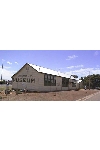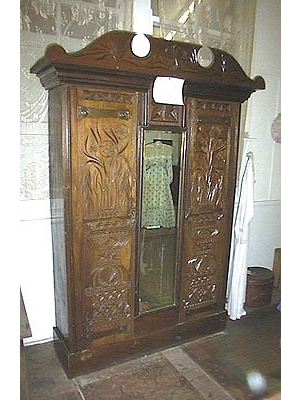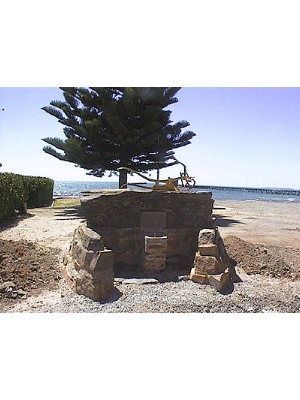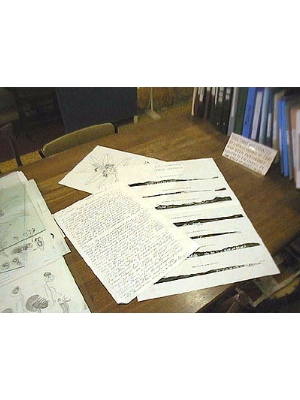Doors carved by pocketknife and left behind when - late col. Lovell returned to England to join WWW1 - He died at the war.
C.L. Alexander Museum

Local history of the district from 1880. Special sections on agriculture, entertainment, sports, marine, schools, churches, transport, household items, photographs, maps and books. The museum if also responsible for the care of Stokes Methodist Church and Pioneer Women's Memorial. Caretakers of the Provis Memorial Park. Markers at the sites of early schools and other places of historical interest. Listing of the heritage listed buildings in the area.
Subject:
- Social History Museum
- Furniture
- Glass
- Jewellery
- Leatherwork
- Metalwork
- Paper
- Pottery and Ceramics
- Textiles, Spinning and Weaving
- Woodwork
- Archives
- Armed Forces
- Childhood
- Numismatics, Coins and Currency
- Domestic Items
- EducationAndSchools
- Exploration
- Genealogy
- Local History
- Medals and Badges
- Politics
- Religion
- Rural Life
- Social History
- Agriculture
- Clocks
- Clothing, Fashion, Costume
- Communications
- Hunting, Fishing, Trapping
- Lighting
- Mass Media
- Medicine and Health
- Photography
- Postal Services
- Printing
- Ships and Shipping
- Surveying
- Telecommunications
- Tools
- Geology
- Dolls
- Literature
- Models
Items
Wardrobe
Carved Draws - Wardrobe

Bell
Church Bell

Acquired by museum 1972
Booklets
Tumby Bay Sketch Books

Ken Whitford - a noted artist who is represented in various galleries in Australia and Australia House, London.
Plough - Replica
Patent - Road Plough

Original patented plough, papers of the patent at the museum. Information on the development of this - the road making, Brattenising and this with information about Robert Bratten.
Charts
Solander of Charts

Mapping, Profile drawings of Australia, Botanical drawings, letters.
